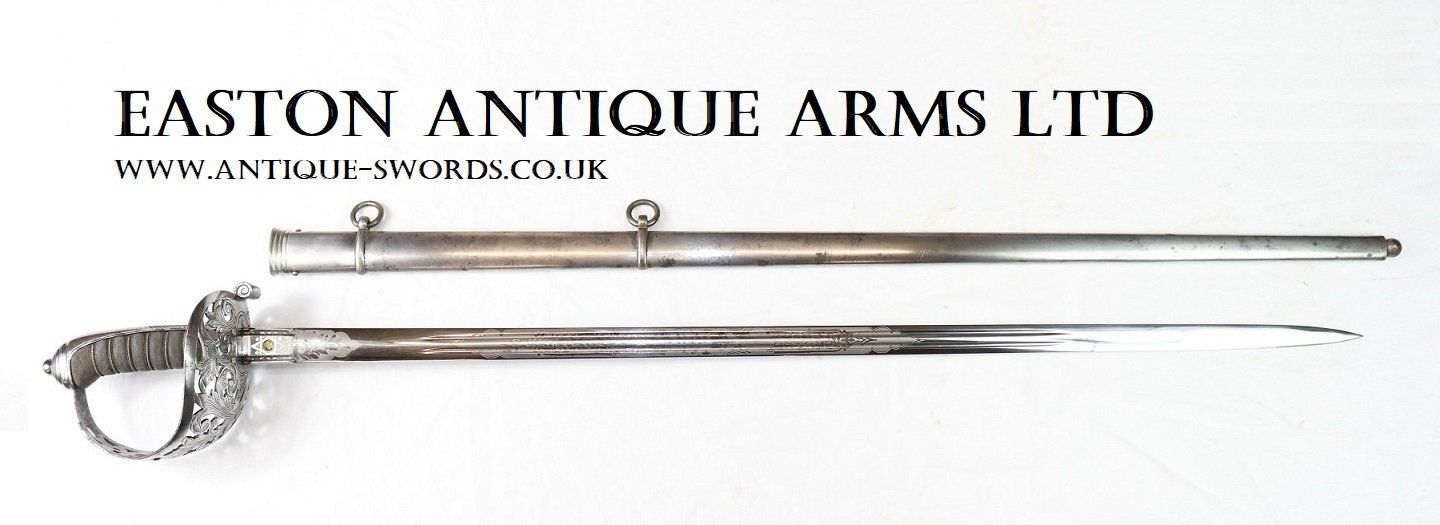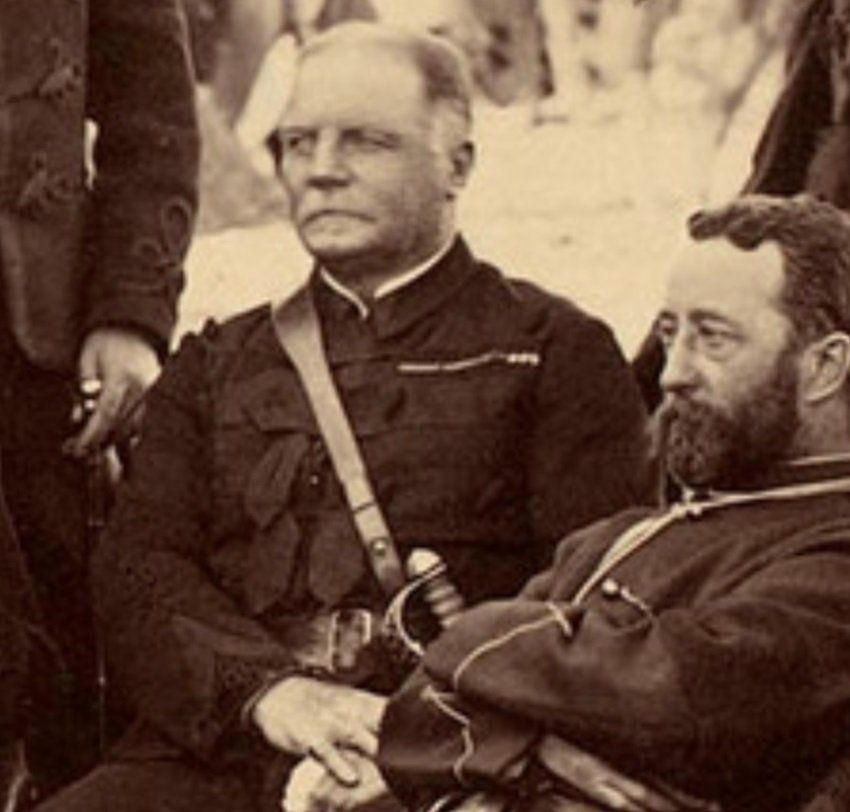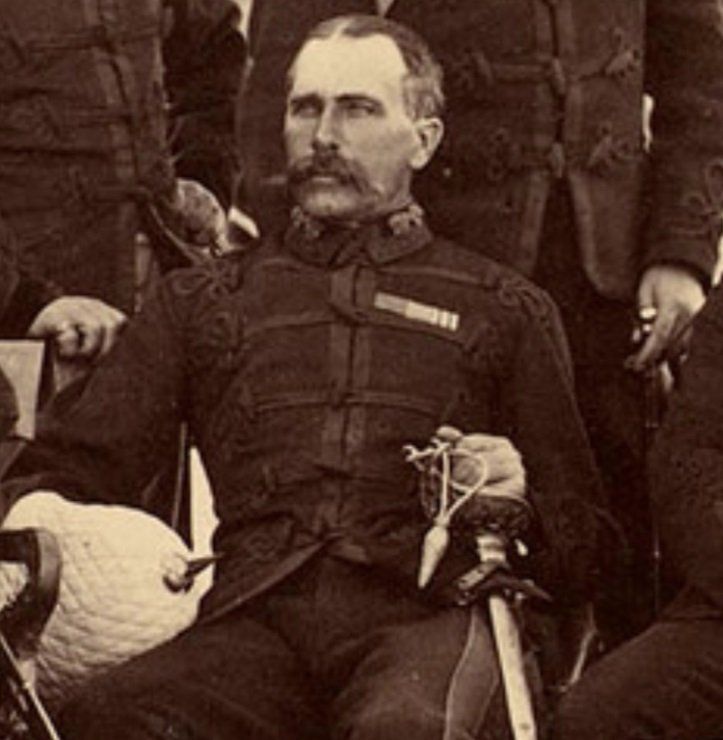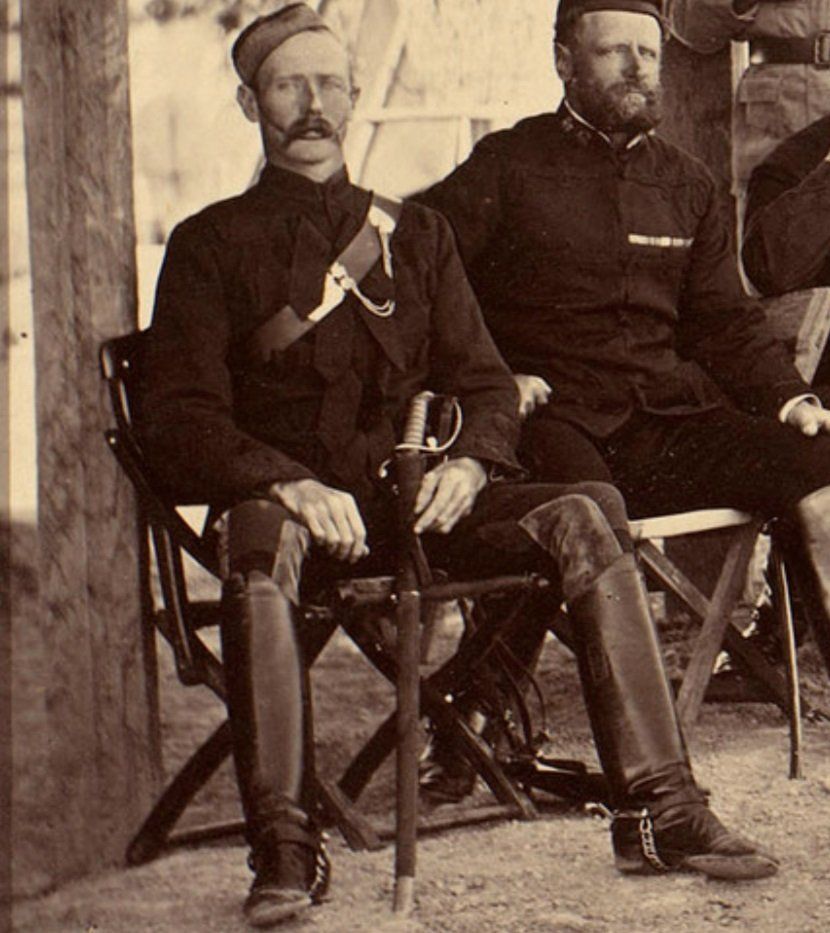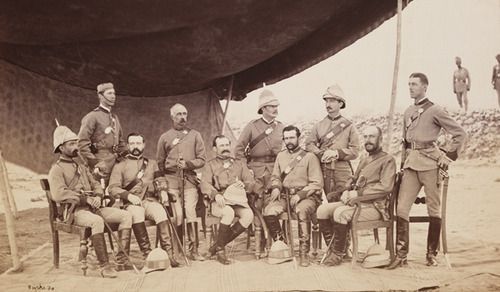Interesting Swords From 2nd Anglo-Afghan War Photos
Interesting Swords from a 2nd Anglo-Afghan War PhotographBy Matt Easton
Interesting Swords from a 2nd Anglo-Afghan War Photograph
By Matt Easton
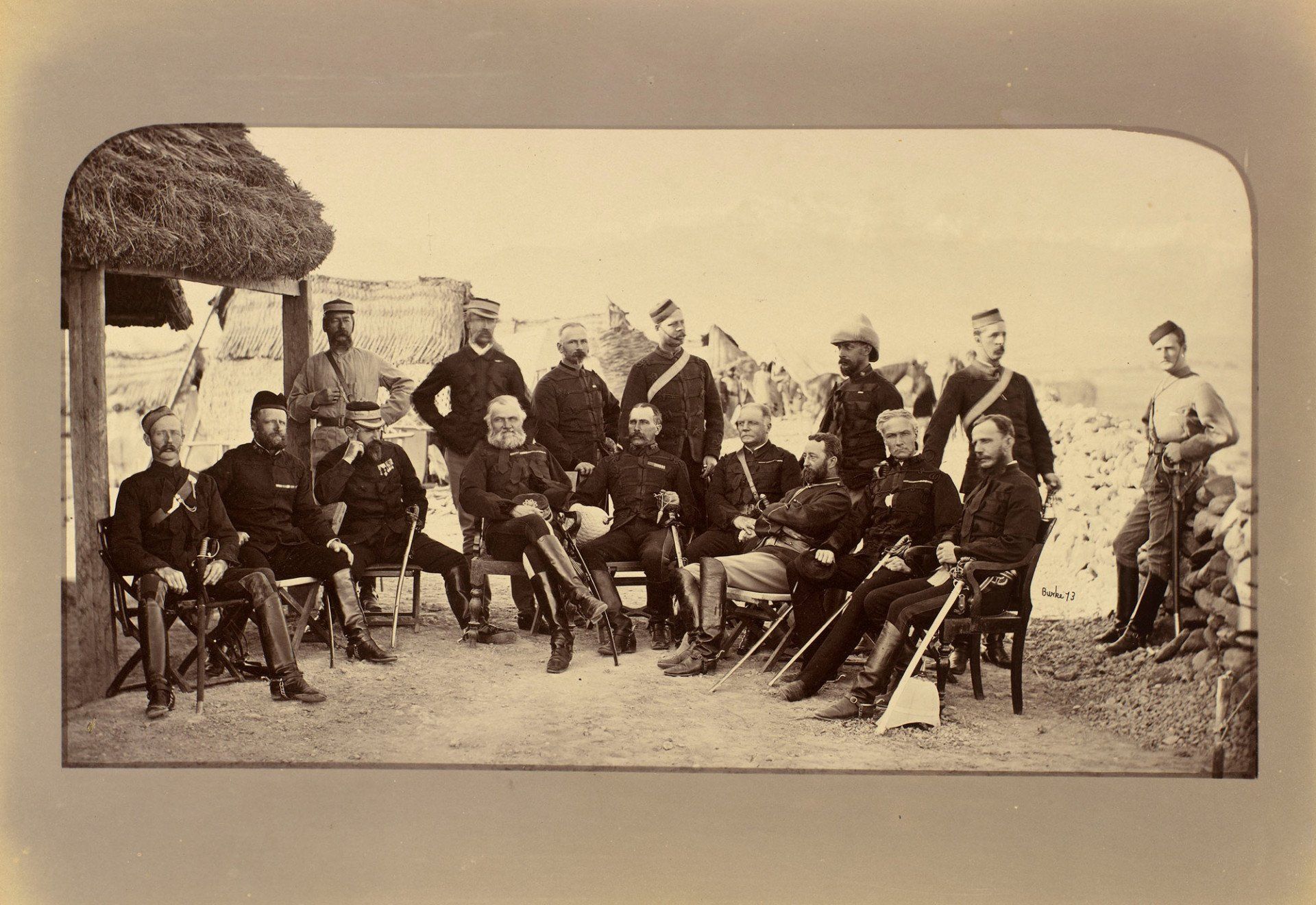
Slide title
Write your caption hereButton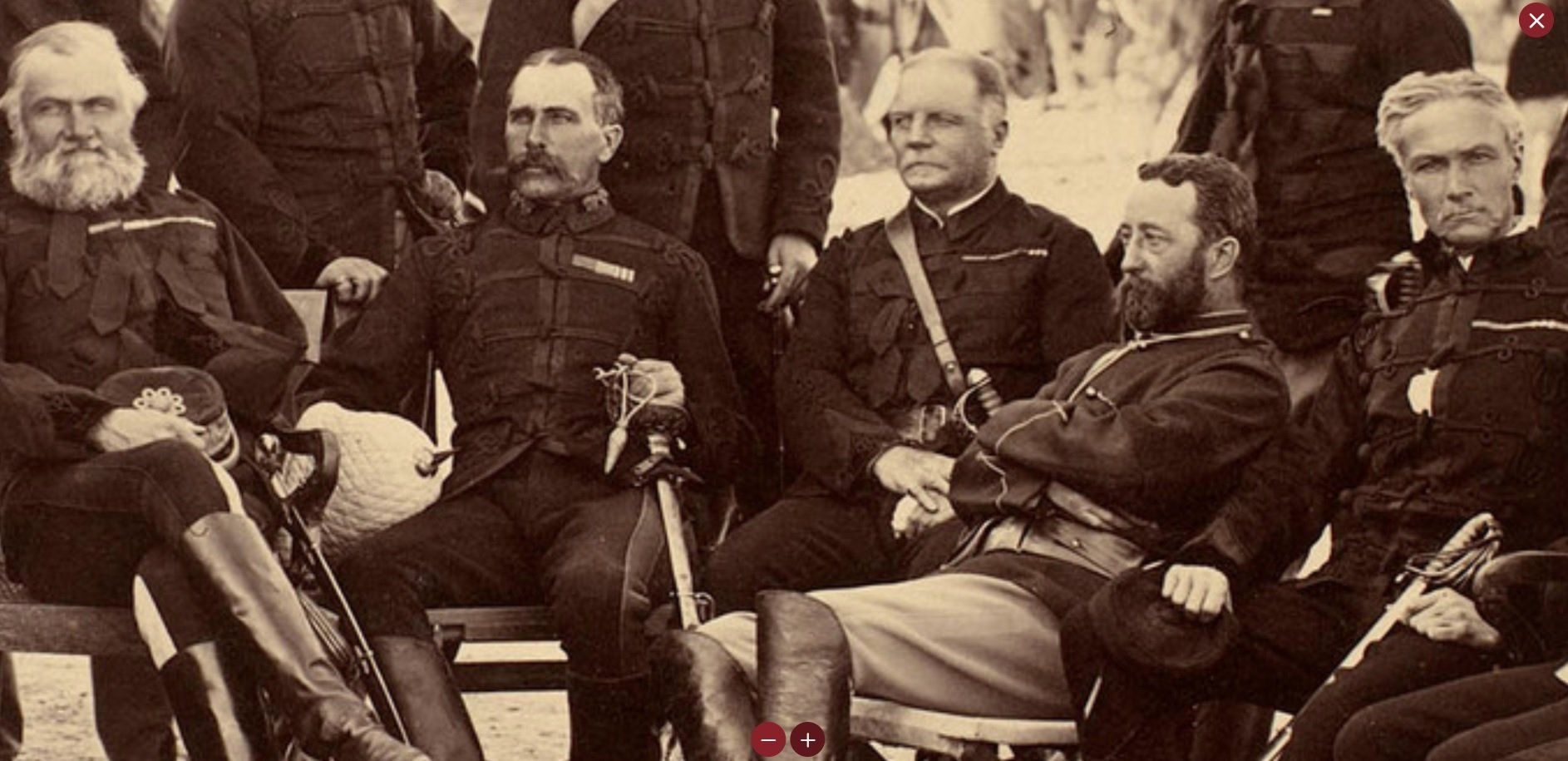
Slide title
Write your caption hereButton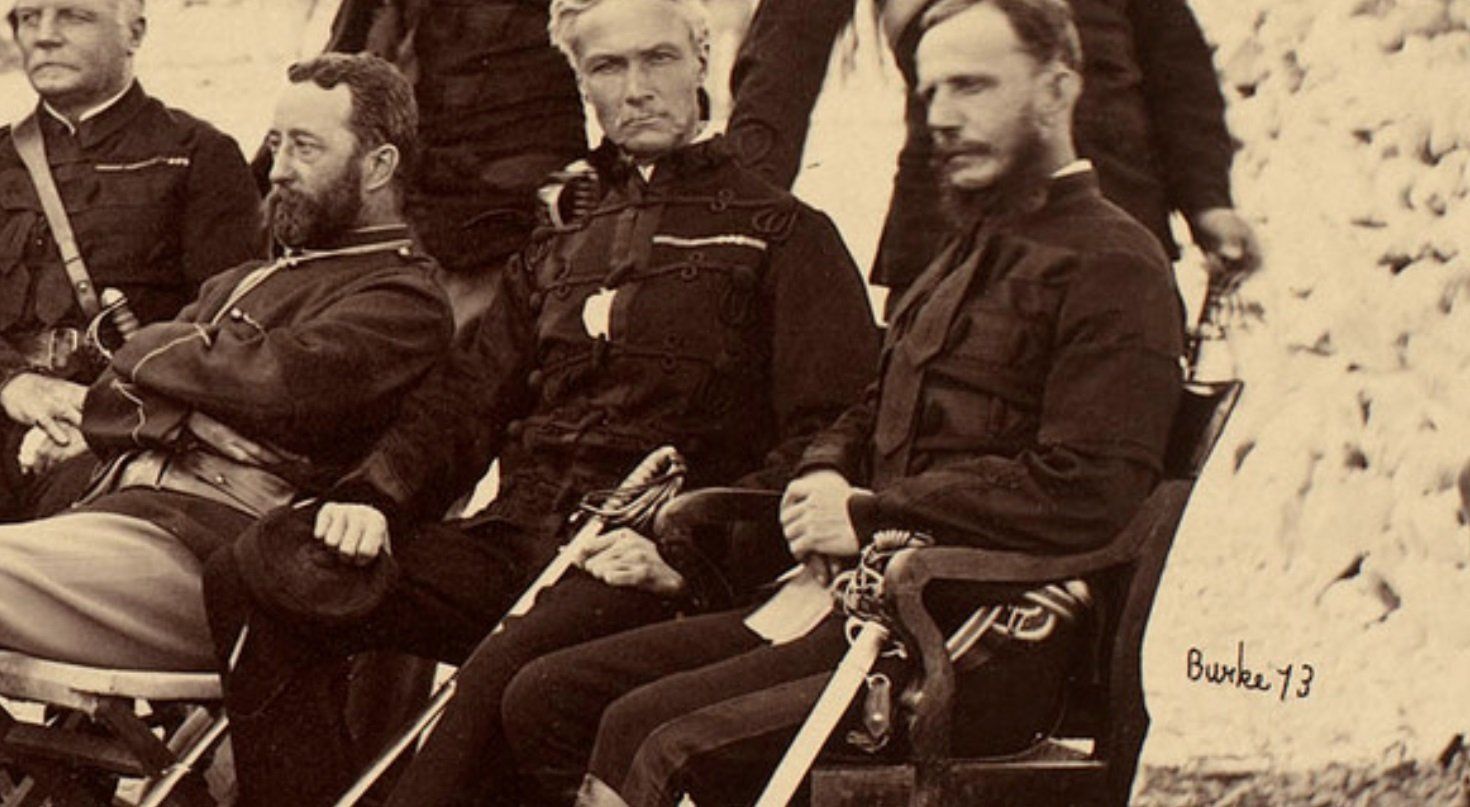
Slide title
Write your caption hereButton
The photograph in question is copyright of the Royal Collection Trust, from the collection of Edward VII when he was Prince of Wales, and is reproduced and linked here purely for academic study purposes. Original source:
https://www.rct.uk/collection/2501356/general-sir-samuel-browne-and-staff-pesahawar-valley-field-force
The photo was taken, probably by John Burke, in 1878. It shows a collection of officers of the Peshawar Valley Field Force during the early stages of the Second Anglo-Afghan War.
There are many interesting things that could be said about the people captured in this photograph, or indeed about the war that it was taken during. But as we are students of the sword, I will be looking only at a few interesting details that we can see in this photograph pertaining to the sword types.
Photographs of the 19th century provide us with an incredible resource when it comes to studying weapons and uniforms, most particularly highlighting that what was carried and worn in reality was not always what we would expect.
The officers pictured are:
Back row standing, left to right:
1 Deputy Surgeon-General J. Gibbons*; 2 unidentified; 3 Major John Slade; 4 unidentified; 5 unidentified; 6 Brigadier General John Doran; 7 unidentified.
Front row sitting, left to right:
1 Lieutenant Gilbert Hamilton; 2 unidentified; 3 Colonel Charles Macgregor; 4 Lieutenant General Sir Samuel Browne (1824-1901) VC (Commander of the Peshawar Valley Field Force); 5 Brigadier-General Frederick Ernest Appleyard (1829-1911); 6 Brigadier-General Sir Herbert Macpherson (1827-86) VC; 7 Brigadier-General Charles Gough VC; 8 Brigadier-General John Adams Tytler (1825-80); 9 unidentified.
*Thanks to Jordan R Pryce Lewis
Before we look at the swords which are perhaps most interesting in the photo, I will quickly note that Lieutenant General Sir Samuel Browne appears centrally here.
He is wearing the 1831 pattern General's sword - a 'Mameluke' (Mamluk) inspired design which owes its origins to the campaigns in Egypt during the Napoleonic Wars. High ranking officers on both sides took to wearing captured and purchased Egyptian (Mamluk) swords such as shamshir and kilij (often with prized 'Damascus' blades), so that there quickly sprung up an industry in making swords of this style in Europe, to be worn by the top echelons as a sign of their rank.
The European 'Mamluke' style swords differ in several constructional details from their North African and Middle Eastern counterparts, but they sought to emulate them even to the point of some having pattern-welded blades to look like the famed 'Damascus' blades, or simply having etched patterns on the surface of their mono-steel blades.
The 1831 pattern General's sword is part of this tradition and while they are generally considered as dress swords, they were nevertheless subjected to the same testing and quality control as other officers' swords of the time. In fact, despite lacking much hand protection and tending to be a little on the short side for mounted officers, many surviving examples have service-sharpened blades and this just goes to show that even Generals sometimes wanted to make sure that their sidearm of last resort was ready when on campaign.
It may also interest some readers to know that Lieut-General Samuel Browne gave his name to the famous Sam Browne belt, which is worn around the world still today by military officers. Sam Browne, as can be seen in the photo above, had lost his left arm. This happened during the episode that led to him being awarded the Victoria Cross:
Browne's Victoria Cross citation reads:
“For having at Seerporah, in an engagement with the Rebel Forces under Khan Allie Khan, on the 31st of August, 1858, whilst advancing upon the Enemy's position, at day break, pushed on with one orderly Sowar [Indian cavalryman] upon a nine-pounder gun that was commanding one of the approaches to the enemy's position, and attacked the gunners, thereby preventing them from re-loading, and firing upon the Infantry, who were advancing to the attack.
In doing this, a personal conflict ensued, in which Captain, now Lieutenant -Colonel, Samuel James Browne, Commandant of the 2nd Punjab Cavalry, received a severe sword-cut wound on the left knee, and shortly afterwards another sword-cut wound, which severed the left arm at the shoulder, not, however, before Lieutenant-Colonel Browne had succeeded in cutting down one of his assailants. The gun was prevented from being re-loaded, and was eventually captured by the Infantry, and the gunner slain."
The story goes that the Sam Browne belt was devised by Browne in order that he could draw his sword one-handed, without needing to hold the scabbard down with the other (non-existent) hand. I have for some time been dubious about this explanation, because in photographs we can already see belts that look like prototype Sam Browne belts in 1857, before Lieut-General Browne lost his left arm. Perhaps it was only the diagonal shoulder-strap that Browne added. In any case, that particular matter requires further research.
It looks as though there may be a folding 'drop' section to the inner portion of the guard. This would mean that the sword most probably dates to before 1860, despite this photo being from 1878. Though as these are all senior officers that should not be considered particularly unusual, as it was fairly common for an officer to carry a sword for the majority or all of their career unless there was some specific reason or desire to replace it.
It is also possible that what we see here is not a folding 'drop', but instead part of something lying under the sword - if it is a folding section then it is a rather strange size and shape, looking very large compared to the rest of the hilt.
Next up we have Brigadier-General Sir Herbert Macpherson (1827-86) VC. He had won the VC during the Indian Mutiny:
"For distinguished conduct at Lucknow, on the 25th September, 1857, in setting an example of heroic gallantry to the men of the regiment, at the period of the action, in which they captured two brass nine-pounders at the point of the bayonet."
(Extract from Field Force Orders of the late Major-General Havelock, dated 17th October, 1857.)
At the time of the Siege of Lucknow in 1857, he was a Lieutenant in the 78th Highlanders. This helps explain the curious outline of his sword shown here in 1878.
Looking at the photo what we see appears to be a scroll guard and a separate pommel - the grip having no backstrap. What this actually is, is a Highland Field Officer's sword, where the pommel cap and grip of the full basket hilt have been retained; the basket hilt being replaced by the half basket scroll hilt. The blade almost certainly would have been the 'claymore' type (as it was then known), being straight and double-edged.
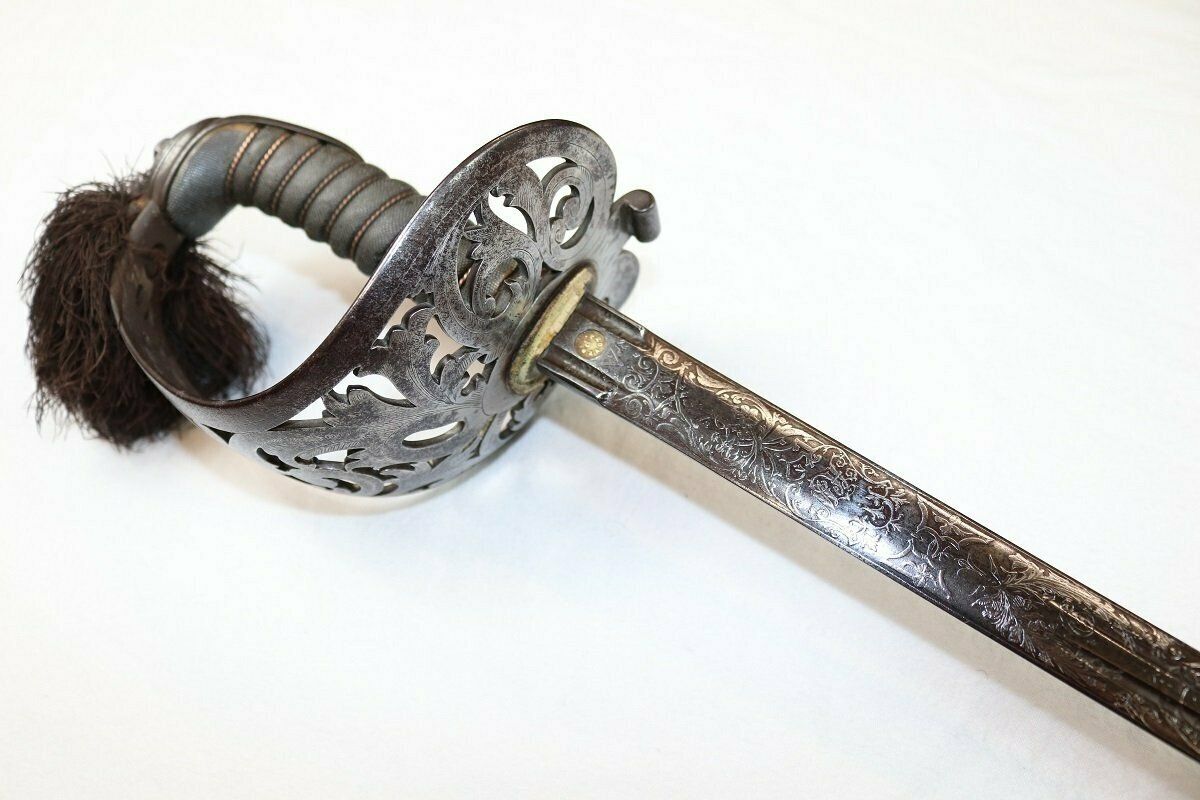
Slide title
Write your caption hereButton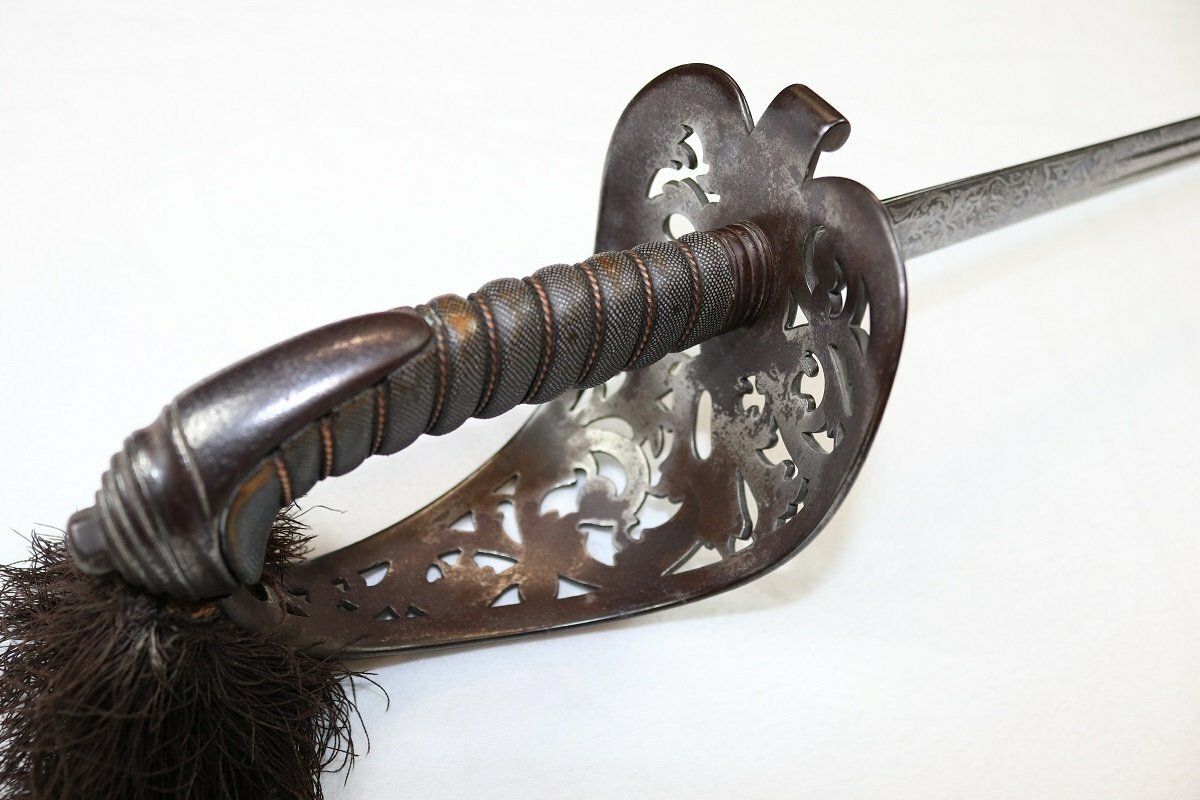
Slide title
Write your caption hereButton
By the 1870s or 1880s it had become convention in Highland regiments for officers of Field Rank (Major or higher) to carry a sword like this instead of the full basket hilt (1828 pattern) of the lower ranking officers and sergeants. The origin of this tradition probably dates back to the Crimean War and Indian Mutiny of the 1850s, when some officers in Highland regiments adopted variations on the basket hilt and sometimes sabre hilts, in order to make swords more practical to their needs (such as riding, or gripping the sword with the thumb-up).
It's interesting to note that Macpherson carried one of these Highland field officer's swords (probably with the ability to unscrew the pommel and change the guard for a basket hilt) because he was not a Highland officer at this point. He was in the Bengal Staff Corps and the Commandant of the 2nd Goorkha (Gurkha) Regiment. It just goes to show that officers did not always change their swords when they changed regiment.
Brigadier-General Frederick Ernest Appleyard, pictured above, also has an interesting sword, again featuring the scroll hilt.
The scroll hilt seems to have had its origins in India and with Henry Wilkinson's company. Records from the Wilkinson archive show early designs of the scroll hilt labelled as the 'Scinde Irregular Cavalry pattern'. The Scinde cavalry were under Brigadier-General John Jacob, who was a great innovator of military doctrine and equipment, perhaps most famously inventing and trialing a double-barreled rifle which could shoot explosive shells. Jacob also wrote about the design and use of swords.
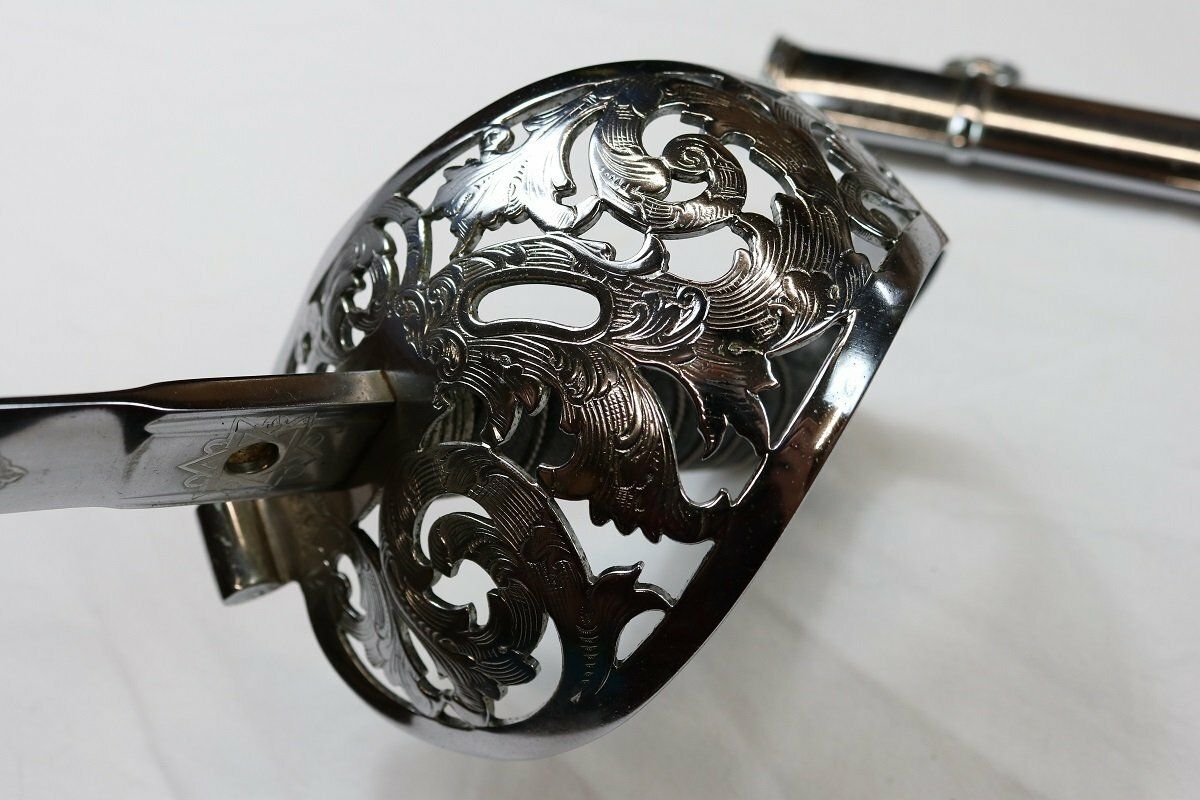
Slide title
Write your caption hereButton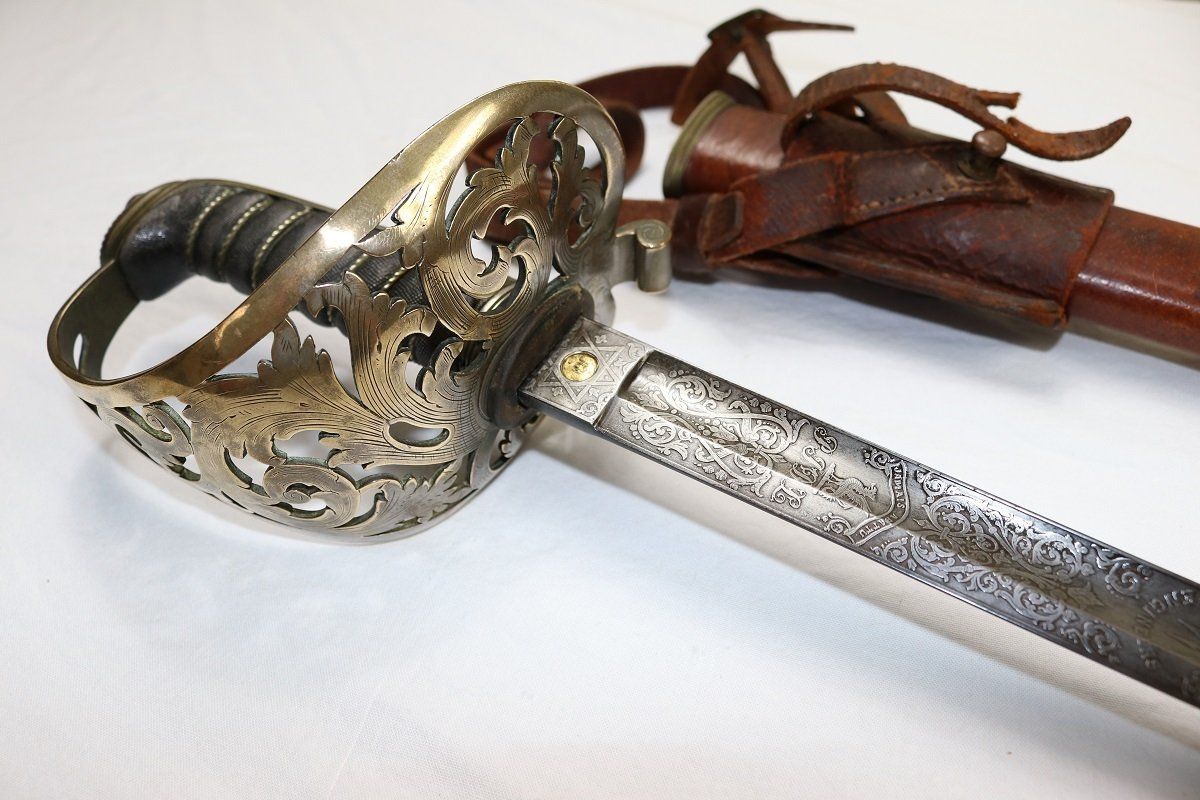
Slide title
Write your caption hereButton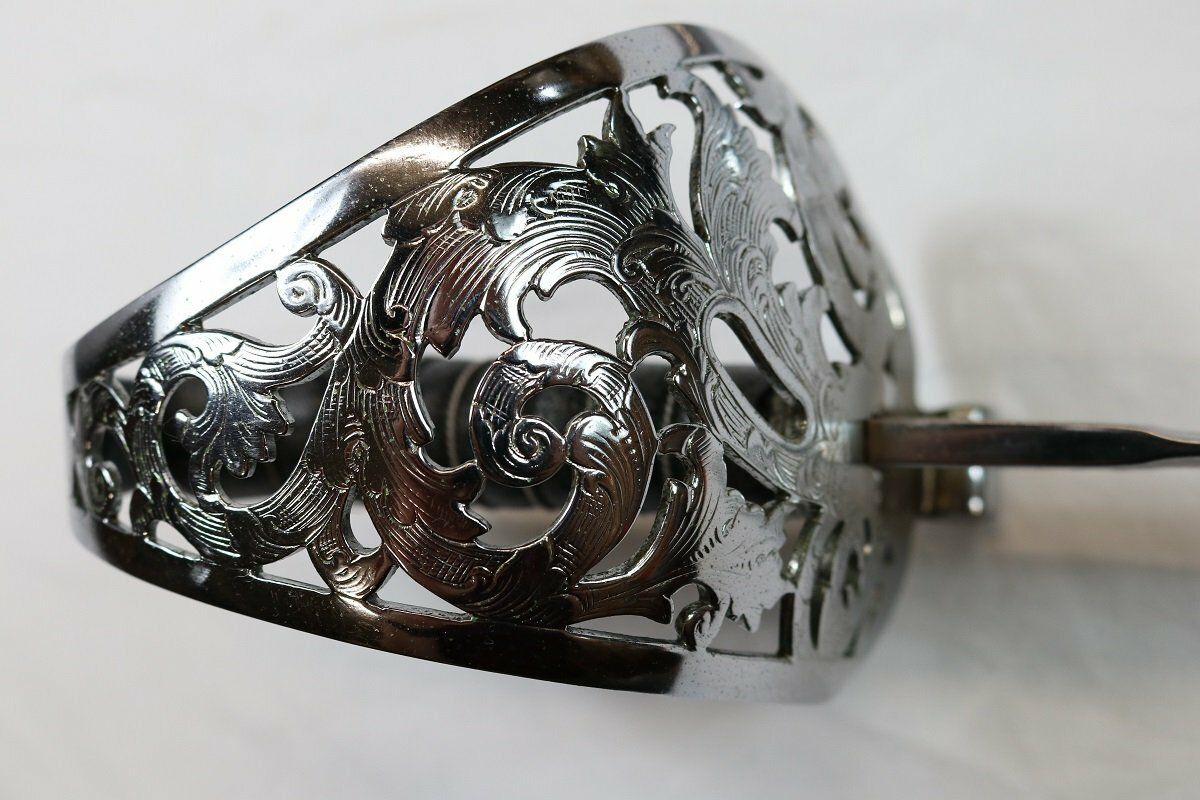
Slide title
Write your caption hereButton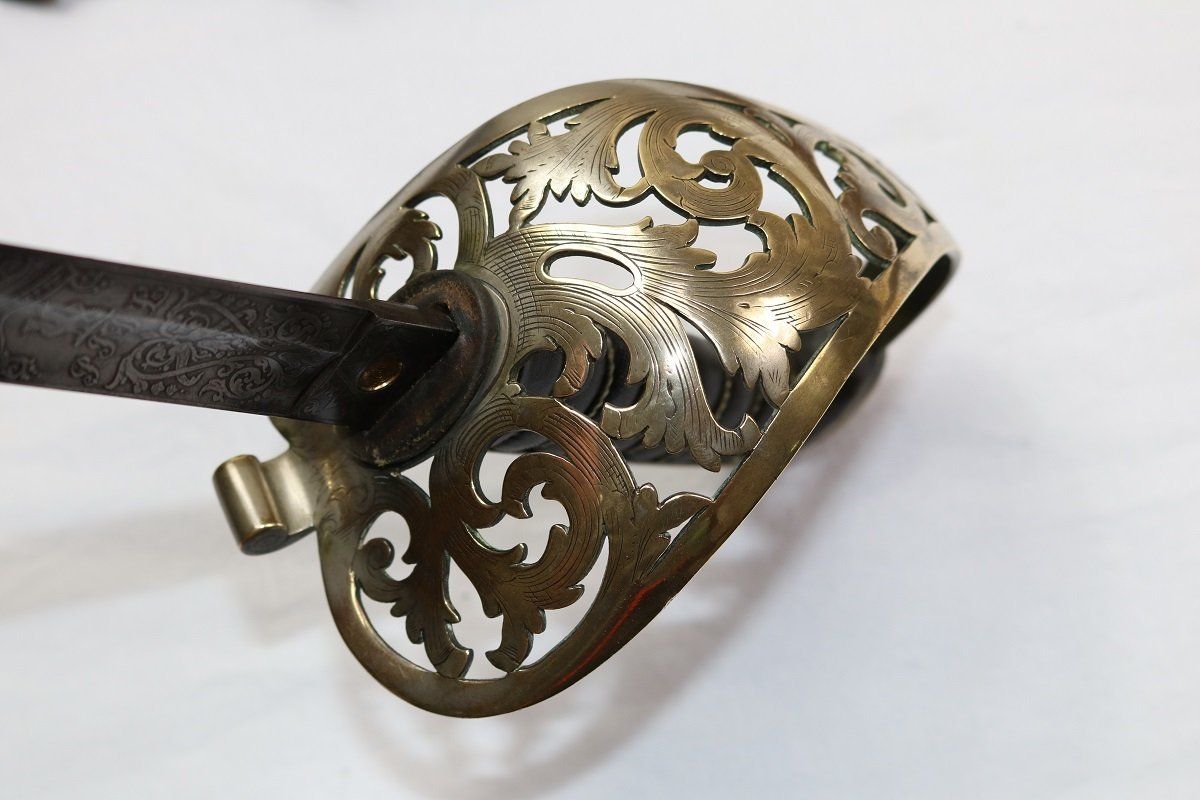
Slide title
Write your caption hereButton
So what sword is it that Appleyard is wearing? The regulation swords using the scroll hilt at this date were the 1857 pattern Royal Engineers sword and the Highland Field Officer's sword, already discussed above. So why is Appleyard wearing a scroll hilt - he was the Lieutenant-Colonel of the 85 Regiment of Foot after all?
Appleyard has joined the 80th Regiment of Foot in 1850, served in the second Burmese war, present at Martaban, the storming of Rangoon and taking of Prome. He exchanged to the 7th Royal Fusiliers and served in the Crimean War. He was wounded at Alma 1854 and at the Redan in 1855, he was present at Inkerman and in the trenches at Sebastopol. He later moved to the 85th Regiment and went on to command a brigade during the 2nd Anglo-Afghan campaign of 1878-80.
None of this explains what sword he is wearing here, nor perhaps the uniform (the Hungarian braid of which corresponds more to artillery and engineers than infantry). I have cross-referenced other photos and paintings of him and this does definitely seem to be him.
So there remain two possibilities: Either he was wearing the uniform and sword of a Royal Engineers officer for some reason, or he had a non-regulation scroll-hilted sword. This second option in itself would not have been terribly unusual, especially as he had spent so much time in India, where scroll hilts were favoured by many serving officers as offering good solid hand protection in close combat.
In either case, this is an interesting case of a sword telling a story and it warrants further research.
Finally we have Lieutenant Gilbert Henry Claude Hamilton, pictured above, of the 14th Hussars, shown wearing what was probably a regulation 1821 pattern 3-bar-hilted light cavalry officer's sword (with 1845 pattern Wilkinson type blade). But here it is the scabbard that is of note, rather than the sword.
The Navy and Army Illustrated gives a great amount of detail about his career:
"Gilbert Hamilton holds a unique record, for he is the first cavalry officer in the army who has ever risen straight from the ranks to command a cavalry regiment, and he deserves the position he has won for himself, if ever a man did, for he has shown himself an exceptionally fine soldier and officer. He joined the 2nd Life Guards as a trooper at the age of seventeen and a half, and before he was twenty-three he had won his commission, being appointed to the regiment he now commands.
His war services comprise the Afghan War of 1879, in which he was, first, aide-de-camp to Sir Sam. Browne, and afterwards galloper to the officer commanding the cavalry brigade at Cabul, and also the Boer War of 1881.
In all military exercises Colonel Hamilton is facile princeps. He holds the record score for shooting with the Martini Henry carbine, and won twice running the Inter-Regimental Revolver competition. As a swordsman he competed seven times at the Royal Military Tournament in the sword versus sword mounted competition, and for six years out of the seven was either first or second, in fact only on one occasion was he knocked out before reaching the final."
It is fitting that we finish with this superb soldier and swordsman, in recognition of the fact that most officers purchased regulation and standard swords. Non-regulation swords are by nature unusual and they are scarce to find as antiques now, with the regulation models greatly predominating. But even in this case, where the sword appears regulation, there is an interesting feature to note - the leather-covered scabbard.
Some people might argue that this could be an Indian-style wood and leather scabbard, with steel fittings, but I think not. If we look down to the bottom, at the chape or drag, we see that the dark part of the scabbard is wider than the steel part. Based on my experience with antiques this marks it out unquestionably as a steel scabbard which has been leather-covered. A feature which is quite rare to find surviving on antiques, probably because it is a feature that people adopted for campaign and then removed afterwards.
Why were steel scabbards sometimes leather-covered? I think there are many possible reasons, all of which are advantageous. Firstly it protects the scabbard from the weather and also to some degree from impact damage. It also makes the scabbard more comfortable to handle and wear, whether in extreme heat or cold. It also makes the scabbards less shiny and therefore helps hide the wear at distance from glinting in the sun and giving away a position to scouts or sharp shooters. Finally, it also reduces the famed amount of clattering sound that people wearing scabbards made on horseback or on foot, which again was likely to alert the enemy.
Period photographs offer a superb resource for students of military equipment and studying these sources can help clarify and expand our knowledge greatly. While most of the famous photos are in public collections, there are a huge number of military photos out there in private hands, for purchase, study and sharing. New sources come to light all the time and hence our knowledge can only grow.
